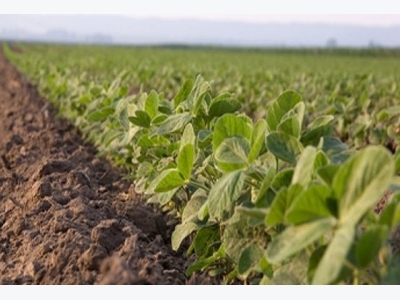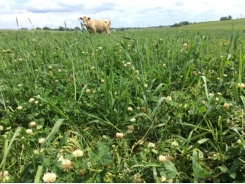Researcher finds way to boost protein yield per soybean plant

US researchers have shown how to increase the amount of protein yield and quality in soybeans.
Published recently in Current Biology, the study is said to be a major breakthrough in the science of improving crop yields.
Washington State University biologist, Mechthild Tegeder, designed a way to increase the flow of nitrogen, an essential nutrient, from specialized bacteria in soybean root nodules to the seed-producing organs.
She said she increased the number of proteins that help move nitrogen from the rhizobia bacteria to the plant's leaves, seed-producing organs and other areas where it is needed.
Tegeder and Amanda Carter, a biological sciences graduate student, found the higher rate of nitrogen transport kicked the plants into overdrive.
The model, which was applied in greenhouse-grown soybean plants, showed they fixed twice as much nitrogen from the atmosphere as their natural counterparts, grew larger and produced up to 36% more seeds, said the authors.
Tegeder told FeedNavigator:
“The research is based on GM technology. We used a gene from common bean, which is highly similar to the soybean gene, and transferred it into soybean.
“The success of these plants is that they produce more biomass and more seeds than the control plants with the same input of resources, which is beneficial for the farmers that grow soybeans. The long distance transport of nitrogen to the developing fruits/seeds is improved in these plants leading to an overall increase in seed yield and protein yield per plant, thus increased protein quality, more protein per plant.”
Environmental benefits
And the researcher said ramping up the natural nitrogen allocation process could result in an increase in the amount of food produced in a way that would not worsen agricultural pollution.
While large amounts of synthetic nitrogen fertilizer are applied around the world to ensure high plant productivity, Tegeder argued that increasing nitrogen fixation could improve overall plant productivity and eliminate or reduce the need for nitrogen fertilizers.
Tegeder said her research also has the potential to be transferred to other crop plants that don't fix nitrogen from the atmosphere but would benefit from being able to uptake nitrogen more efficiently from the soil.
Field conditions
However, the trial was done on greenhouse-grown soybean plants, so we asked the researcher how she can be sure the findings would adapt to field conditions:
“This is the next step. Our results were obtained from plants that were grown under controlled environmental conditions in the greenhouse. We are currently trying to get financial support that would allow us to test the plants in the field and to determine if they continue to outperform the control plants in the field," said Tegeder.
Có thể bạn quan tâm
Phần mềm

Phối trộn thức ăn chăn nuôi

Pha dung dịch thủy canh

Định mức cho tôm ăn

Phối trộn phân bón NPK

Xác định tỷ lệ tôm sống

Chuyển đổi đơn vị phân bón

Xác định công suất sục khí

Chuyển đổi đơn vị tôm

Tính diện tích nhà kính

Tính thể tích ao hồ



 How to Plant Asparagus
How to Plant Asparagus  Two types of models integrated to predict climate…
Two types of models integrated to predict climate…